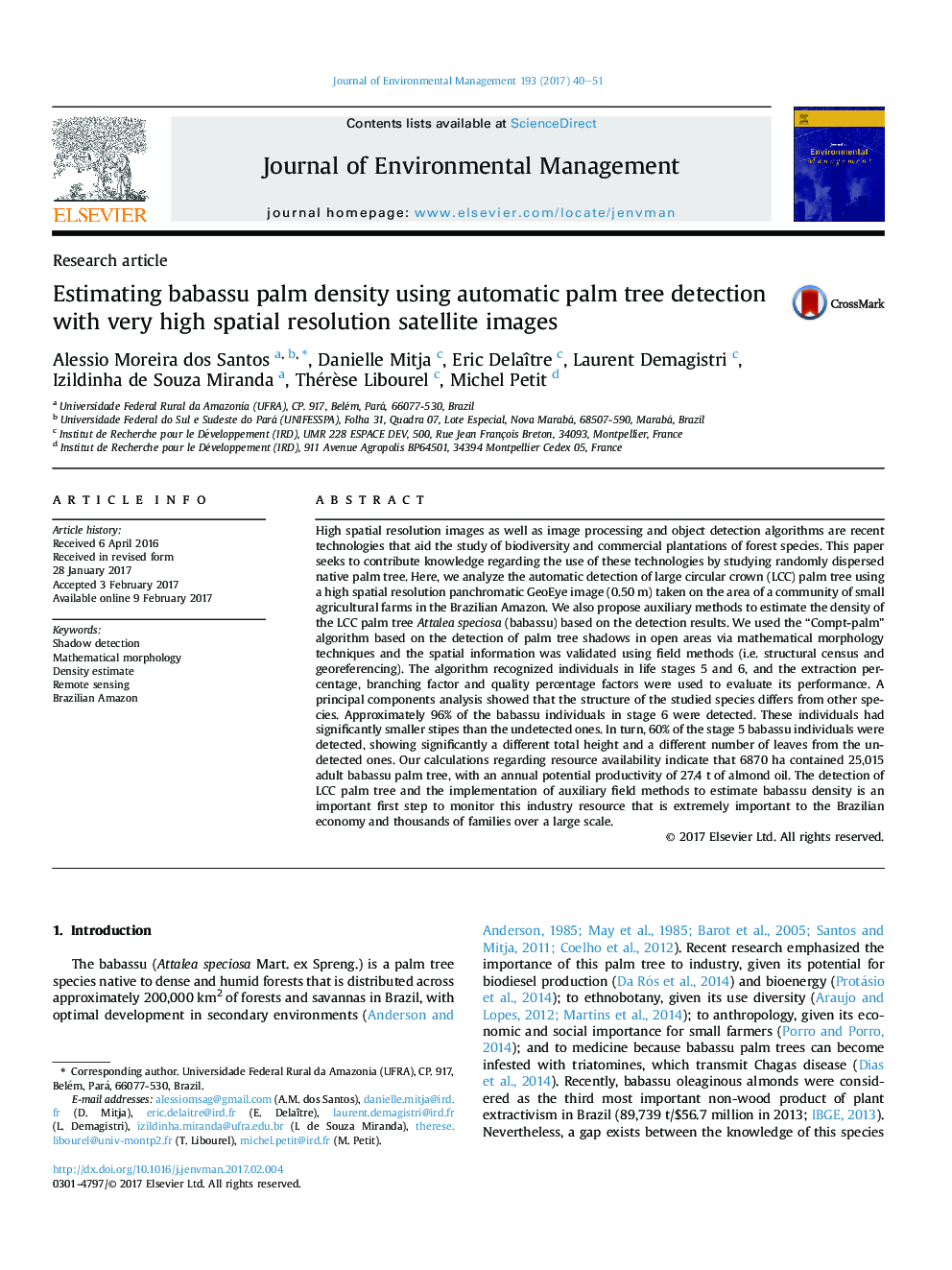| Article ID | Journal | Published Year | Pages | File Type |
|---|---|---|---|---|
| 5116808 | Journal of Environmental Management | 2017 | 12 Pages |
â¢Babassu, inajá and tucumã palms show structural differences.â¢The algorithm can detect only adults and young pre-adults.â¢Field methods combined with remote sensing data allow to quantify the production.â¢In open areas the algorithm detects the shadows of palms with large circular crown.
High spatial resolution images as well as image processing and object detection algorithms are recent technologies that aid the study of biodiversity and commercial plantations of forest species. This paper seeks to contribute knowledge regarding the use of these technologies by studying randomly dispersed native palm tree. Here, we analyze the automatic detection of large circular crown (LCC) palm tree using a high spatial resolution panchromatic GeoEye image (0.50Â m) taken on the area of a community of small agricultural farms in the Brazilian Amazon. We also propose auxiliary methods to estimate the density of the LCC palm tree Attalea speciosa (babassu) based on the detection results. We used the “Compt-palm” algorithm based on the detection of palm tree shadows in open areas via mathematical morphology techniques and the spatial information was validated using field methods (i.e. structural census and georeferencing). The algorithm recognized individuals in life stages 5 and 6, and the extraction percentage, branching factor and quality percentage factors were used to evaluate its performance. A principal components analysis showed that the structure of the studied species differs from other species. Approximately 96% of the babassu individuals in stage 6 were detected. These individuals had significantly smaller stipes than the undetected ones. In turn, 60% of the stage 5 babassu individuals were detected, showing significantly a different total height and a different number of leaves from the undetected ones. Our calculations regarding resource availability indicate that 6870Â ha contained 25,015 adult babassu palm tree, with an annual potential productivity of 27.4Â t of almond oil. The detection of LCC palm tree and the implementation of auxiliary field methods to estimate babassu density is an important first step to monitor this industry resource that is extremely important to the Brazilian economy and thousands of families over a large scale.
